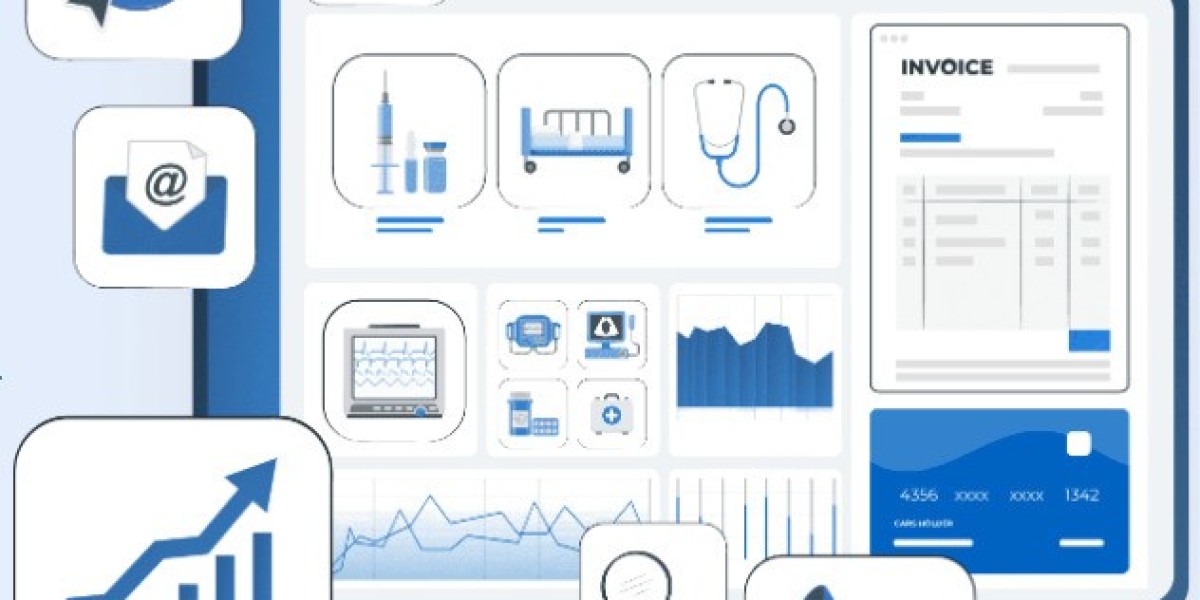The healthcare industry is notoriously complex, with various regulations, patient care processes, and financial intricacies. One of the most challenging aspects of running a healthcare practice is managing the revenue cycle. This process encompasses everything from patient registration to the final payment, and inefficiencies in this cycle can lead to delayed revenue, increased costs, and even loss of patients. Medical billing software has emerged as a critical tool in streamlining revenue cycle management (RCM). In this article, we’ll explore how medical billing software can improve the efficiency of your revenue cycle, the benefits it brings to healthcare providers, and the features to look for when choosing the right solution.
Understanding Revenue Cycle Management
Before diving into how medical billing software can enhance RCM, it’s essential to understand what RCM entails. The revenue cycle consists of several stages:
- Patient Registration: Gathering patient information, verifying insurance coverage, and ensuring all necessary documentation is complete.
- Charge Capture: Recording services rendered to the patient during their visit, including diagnostic tests, procedures, and consultations.
- Claims Submission: Sending claims to insurance companies for reimbursement for services provided.
- Payment Posting: Recording payments received from both insurers and patients.
- Denial Management: Addressing denied claims, understanding the reasons for denial, and resubmitting claims if necessary.
- Collections: Managing accounts receivable and pursuing payments from patients and insurers.
Each of these stages is interconnected, and any inefficiency or error can disrupt the entire revenue cycle. Medical billing software plays a pivotal role in optimizing these processes.
Benefits of Medical Billing Software for Revenue Cycle Management
1. Increased Efficiency and Speed
One of the primary advantages of medical billing software is its ability to automate and streamline processes. Manual billing methods can be time-consuming and prone to errors. Automated systems can significantly reduce the time it takes to complete tasks, allowing your staff to focus on patient care rather than paperwork. For instance, medical billing software can automatically generate invoices based on the services recorded in the electronic health record (EHR) system, speeding up the billing process.
2. Improved Accuracy
Errors in billing can lead to denied claims and delayed payments, which can negatively impact cash flow. Medical billing software often includes built-in checks to ensure that claims are submitted correctly the first time. This reduces the risk of errors associated with manual data entry, such as incorrect patient information, coding mistakes, or missed charges.
3. Streamlined Claims Submission
With the integration of medical billing software, healthcare providers can easily submit claims electronically. This not only speeds up the submission process but also allows for real-time tracking of claims. Providers can monitor the status of their claims and address any issues that may arise more promptly. Many medical billing software solutions also offer electronic remittance advice (ERA) functionality, which helps healthcare providers reconcile payments faster.
4. Enhanced Denial Management
Denial management is one of the most challenging aspects of RCM. Medical billing software can help identify patterns in denied claims, providing insights into common issues and enabling providers to address them proactively. By analyzing denial data, practices can implement changes to reduce future denials, ultimately improving revenue collection.
5. Better Patient Communication and Engagement
Medical billing software often includes patient portals that allow patients to view their bills, make payments, and communicate with the billing department. This transparency can lead to improved patient satisfaction and timely payments. Patients are more likely to pay their bills if they understand their financial responsibility upfront, and a patient portal can facilitate this communication.
6. Comprehensive Reporting and Analytics
Access to accurate and timely financial data is crucial for effective decision-making. Medical billing software provides robust reporting tools that allow practices to analyze their financial performance. Providers can track key metrics such as days in accounts receivable, claim denial rates, and overall revenue trends. This data can help practices identify areas for improvement and make informed strategic decisions.
7. Compliance and Security
The healthcare industry is highly regulated, and compliance with billing regulations is critical. Medical billing software helps practices stay compliant with federal and state regulations, such as the Health Insurance Portability and Accountability Act (HIPAA). Additionally, these systems typically include advanced security features to protect sensitive patient data from breaches and unauthorized access.
8. Scalability
As a healthcare practice grows, its billing processes can become increasingly complex. Medical billing software is designed to scale with your practice, accommodating more patients, services, and billing codes without sacrificing efficiency. This flexibility makes it easier for practices to adapt to changing needs and continue operating smoothly.
Key Features to Look for in Medical Billing Software
When selecting medical billing software, it’s essential to consider the features that will best meet your practice's needs. Here are some key features to look for:
1. Integration with EHR Systems
Choosing a medical billing software that integrates seamlessly with your existing EHR system is crucial. This integration ensures that patient information and billing data are synchronized, reducing the risk of errors and streamlining the billing process.
2. Automated Claim Scrubbing
Look for software that includes automated claim scrubbing capabilities. This feature helps identify potential errors before claims are submitted, reducing the likelihood of denials and improving overall accuracy.
3. Real-Time Claims Tracking
Real-time claims tracking allows you to monitor the status of submitted claims and quickly identify any issues that arise. This feature is essential for effective denial management and ensures that you can take action promptly to resolve any problems.
4. Patient Portal
A user-friendly patient portal can enhance patient engagement and improve collections. Patients should be able to view their bills, understand their financial responsibility, and make payments easily through the portal.
5. Comprehensive Reporting Tools
Robust reporting capabilities are essential for analyzing financial performance. Look for software that provides customizable reports on key metrics, such as days in accounts receivable, denial rates, and payment trends.
6. Scalability and Flexibility
Choose software that can grow with your practice. As your patient base increases, your billing processes may become more complex. A scalable solution will accommodate your changing needs without requiring a complete system overhaul.
7. Customer Support and Training
Effective customer support and training resources are vital when implementing new software. Ensure that the vendor provides comprehensive training for your staff and offers ongoing support to address any issues that arise.
8. Compliance Features
Select software that includes built-in compliance features to help you adhere to industry regulations. This will reduce the risk of audits and penalties due to non-compliance.
Conclusion
In an increasingly competitive healthcare landscape, efficient revenue cycle management is crucial for the financial health of healthcare practices. Medical billing software has proven to be an invaluable tool in streamlining RCM processes, reducing errors, and improving cash flow. By automating and optimizing various stages of the revenue cycle, this software allows healthcare providers to focus on what matters most—delivering high-quality patient care.
As healthcare continues to evolve, investing in the right medical billing software will not only enhance operational efficiency but also contribute to the long-term success of your practice. Whether you’re a small clinic or a large healthcare facility, the benefits of adopting medical billing software for revenue cycle management are clear. By embracing technology, you can navigate the complexities of healthcare billing and improve your practice’s financial performance.






